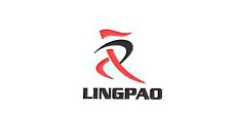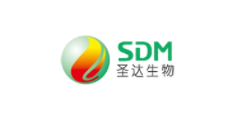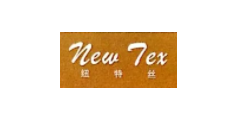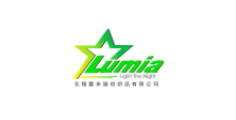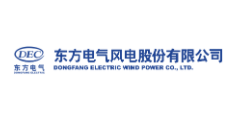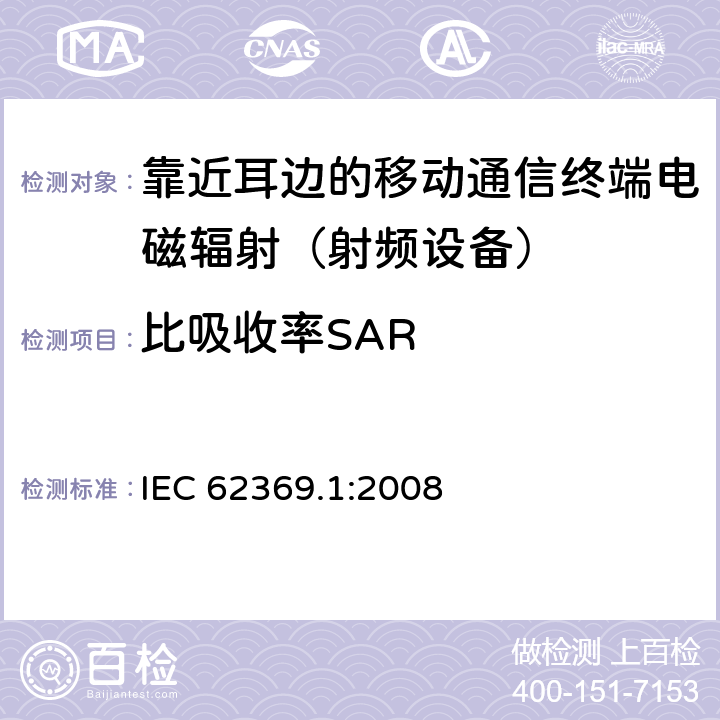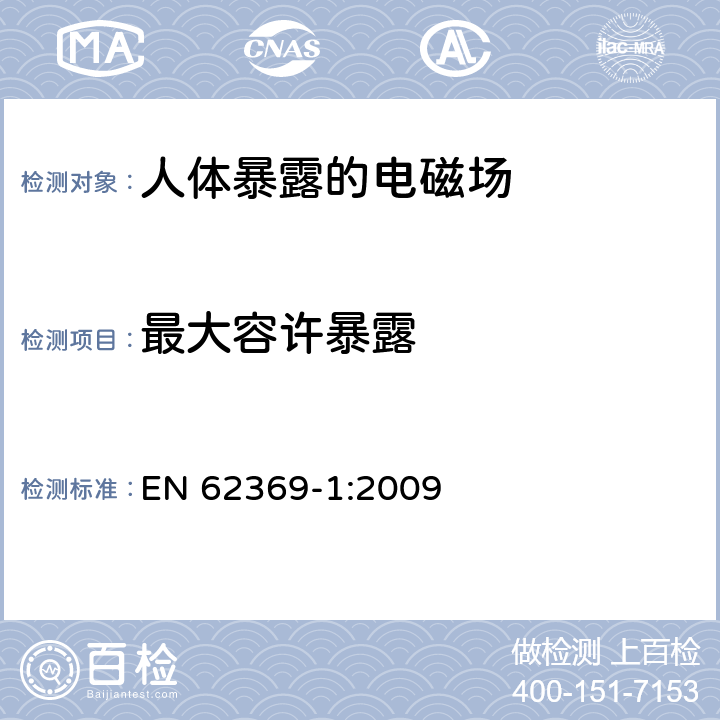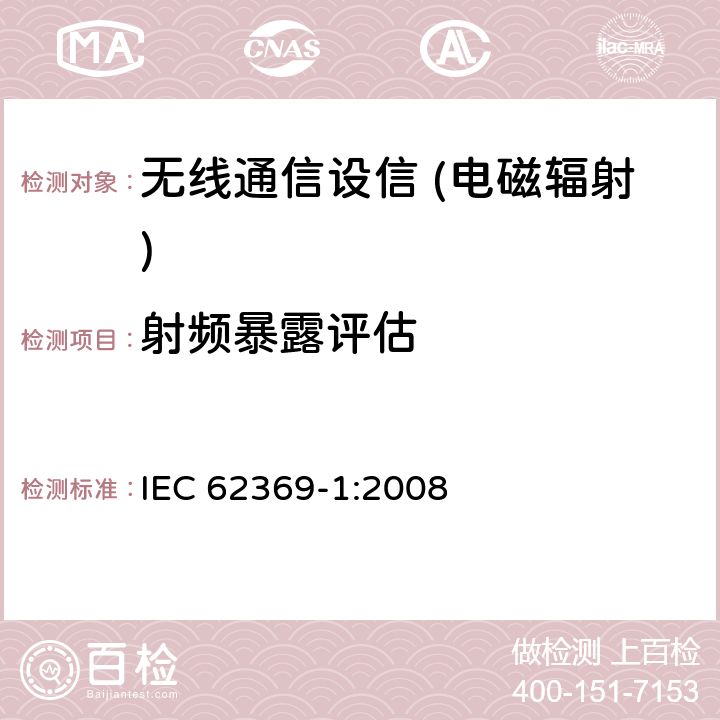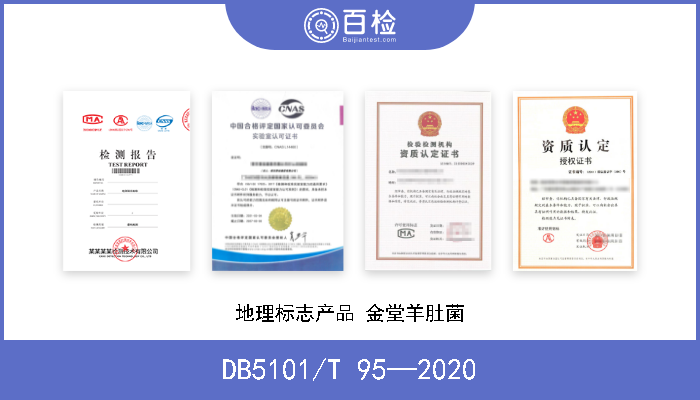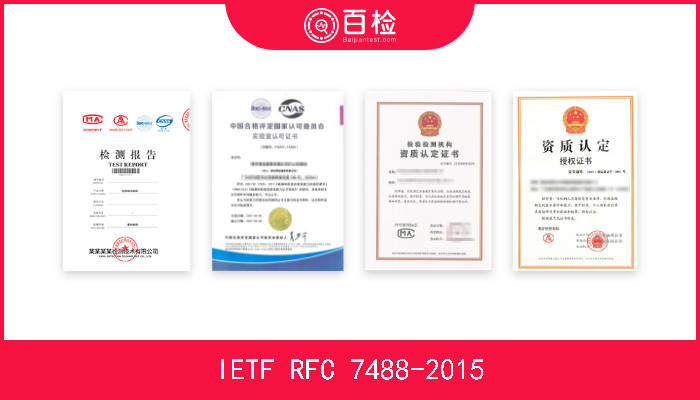IEC 62369-1-2008 人体暴露在频率范围为0 GHz~300 GHz的各种设备中短程装置(SRDs)产生的电磁场中的评估.第1部分:电子产品监测、无线电频率鉴定和类似系统用装置产生的电磁场
百检网 2021-08-04
标准号:IEC 62369-1-2008
中文标准名称:人体暴露在频率范围为0 GHz~300 GHz的各种设备中短程装置(SRDs)产生的电磁场中的评估.第1部分:电子产品监测、无线电频率鉴定和类似系统用装置产生的电磁场
英文标准名称:Evaluation of human exposure to electromagnetic fields from short range devices (SRDs) in various applications over the frequency range 0 GHz to 300 GHz - Part 1: Fields produced by devices used for electronic article surveillance, radio frequency identif
标准类型:L06
发布日期:1999/12/31 12:00:00
实施日期:1999/12/31 12:00:00
中国标准分类号:L06
国际标准分类号:17.240;33.050;35.240.60
适用范围:This part of IEC62369 presents procedures for the evaluation of human exposure toelectromagnetic fields (EMFs) from devices used in electronic article surveillance (EAS), radiofrequency identification (RFID) and similar applications. It adopts a staged approach tofacilitate compliance assessment. The first stage (Stage 1) is a simple measurement againstthe appropriate derived reference values. Stage 2 is a more complex series of measurementsor calculations, coupled with analysis techniques. Stage 3 requires detailed modelling andanalysis for comparison with the basic restrictions. When assessing any device, the mostappropriate method for the exposure situation may be used.At the time of writing this International Standard, electronic article surveillance, radiofrequency identification and similar systems do not normally operate at frequencies below1 Hz or above 10 GHz. EMF exposure guidelines and standards can cover a wider range offrequencies, so clarification on the required range is included as part of the evaluationprocedures.The devices covered by this document normally have non-uniform field patterns. Often thesedevices have a very rapid reduction of field strength with distance and operate under near-field conditions where the relationship between electric and magnetic fields is not constant.This, together with typical exposure conditions for different device types, is detailed inAnnex A.Annex B contains comprehensive information to assist with numerical modelling of theexposure situation. It includes both homogeneous and anatomical models as well as theelectrical properties of tissue.This International Standard does not include limits. Limits can be obtained from separatelypublished human exposure guidelines. Different guidelines and limit values may apply indifferent regions. Linked into the guidelines are usually methods for summation across widerfrequency ranges and for multiple exposure sources. These shall be used. A simplifiedmethod for summation of multiple sources is contained in Annex C. This has to be used withcare as it is simplistic and will overestimate the exposure; however it is useful as a guide,when the results of different evaluations are in different units of measure which are notcompatible.Different countries and regions have different guidelines for handling the uncertainties fromthe evaluation. Annex D provides information on the two most common methods.A bibliography at the end of this standard provides general information as well as useful Iinformation for the measurement of electromagnetic fields. See [1],[2],[3],[4],[5],[6]1).Similar national or international standards may be used as an alternative.
中文标准名称:人体暴露在频率范围为0 GHz~300 GHz的各种设备中短程装置(SRDs)产生的电磁场中的评估.第1部分:电子产品监测、无线电频率鉴定和类似系统用装置产生的电磁场
英文标准名称:Evaluation of human exposure to electromagnetic fields from short range devices (SRDs) in various applications over the frequency range 0 GHz to 300 GHz - Part 1: Fields produced by devices used for electronic article surveillance, radio frequency identif
标准类型:L06
发布日期:1999/12/31 12:00:00
实施日期:1999/12/31 12:00:00
中国标准分类号:L06
国际标准分类号:17.240;33.050;35.240.60
适用范围:This part of IEC62369 presents procedures for the evaluation of human exposure toelectromagnetic fields (EMFs) from devices used in electronic article surveillance (EAS), radiofrequency identification (RFID) and similar applications. It adopts a staged approach tofacilitate compliance assessment. The first stage (Stage 1) is a simple measurement againstthe appropriate derived reference values. Stage 2 is a more complex series of measurementsor calculations, coupled with analysis techniques. Stage 3 requires detailed modelling andanalysis for comparison with the basic restrictions. When assessing any device, the mostappropriate method for the exposure situation may be used.At the time of writing this International Standard, electronic article surveillance, radiofrequency identification and similar systems do not normally operate at frequencies below1 Hz or above 10 GHz. EMF exposure guidelines and standards can cover a wider range offrequencies, so clarification on the required range is included as part of the evaluationprocedures.The devices covered by this document normally have non-uniform field patterns. Often thesedevices have a very rapid reduction of field strength with distance and operate under near-field conditions where the relationship between electric and magnetic fields is not constant.This, together with typical exposure conditions for different device types, is detailed inAnnex A.Annex B contains comprehensive information to assist with numerical modelling of theexposure situation. It includes both homogeneous and anatomical models as well as theelectrical properties of tissue.This International Standard does not include limits. Limits can be obtained from separatelypublished human exposure guidelines. Different guidelines and limit values may apply indifferent regions. Linked into the guidelines are usually methods for summation across widerfrequency ranges and for multiple exposure sources. These shall be used. A simplifiedmethod for summation of multiple sources is contained in Annex C. This has to be used withcare as it is simplistic and will overestimate the exposure; however it is useful as a guide,when the results of different evaluations are in different units of measure which are notcompatible.Different countries and regions have different guidelines for handling the uncertainties fromthe evaluation. Annex D provides information on the two most common methods.A bibliography at the end of this standard provides general information as well as useful Iinformation for the measurement of electromagnetic fields. See [1],[2],[3],[4],[5],[6]1).Similar national or international standards may be used as an alternative.
百检能给您带来哪些改变?
1、检测行业全覆盖,满足不同的检测;
2、实验室全覆盖,就近分配本地化检测;
3、工程师一对一服务,让检测更精准;
4、免费初检,初检不收取检测费用;
5、自助下单 快递免费上门取样;
6、周期短,费用低,服务周到;
7、拥有CMA、CNAS、CAL等权威资质;
8、检测报告权威有效、中国通用;
客户案例展示
相关商品
版权与免责声明
①本网注名来源于“互联网”的所有作品,版权归原作者或者来源机构所有,如果有涉及作品内容、版权等问题,请在作品发表之日起一个月内与本网联系,联系邮箱service@baijiantest.com,否则视为默认百检网有权进行转载。
②本网注名来源于“百检网”的所有作品,版权归百检网所有,未经本网授权不得转载、摘编或利用其它方式使用。想要转载本网作品,请联系:service@baijiantest.com。已获本网授权的作品,应在授权范围内使用,并注明"来源:百检网"。违者本网将追究相关法律责任。
③本网所载作品仅代表作者独立观点,不代表百检立场,用户需作出独立判断,如有异议或投诉,请联系service@baijiantest.com
相关问答

